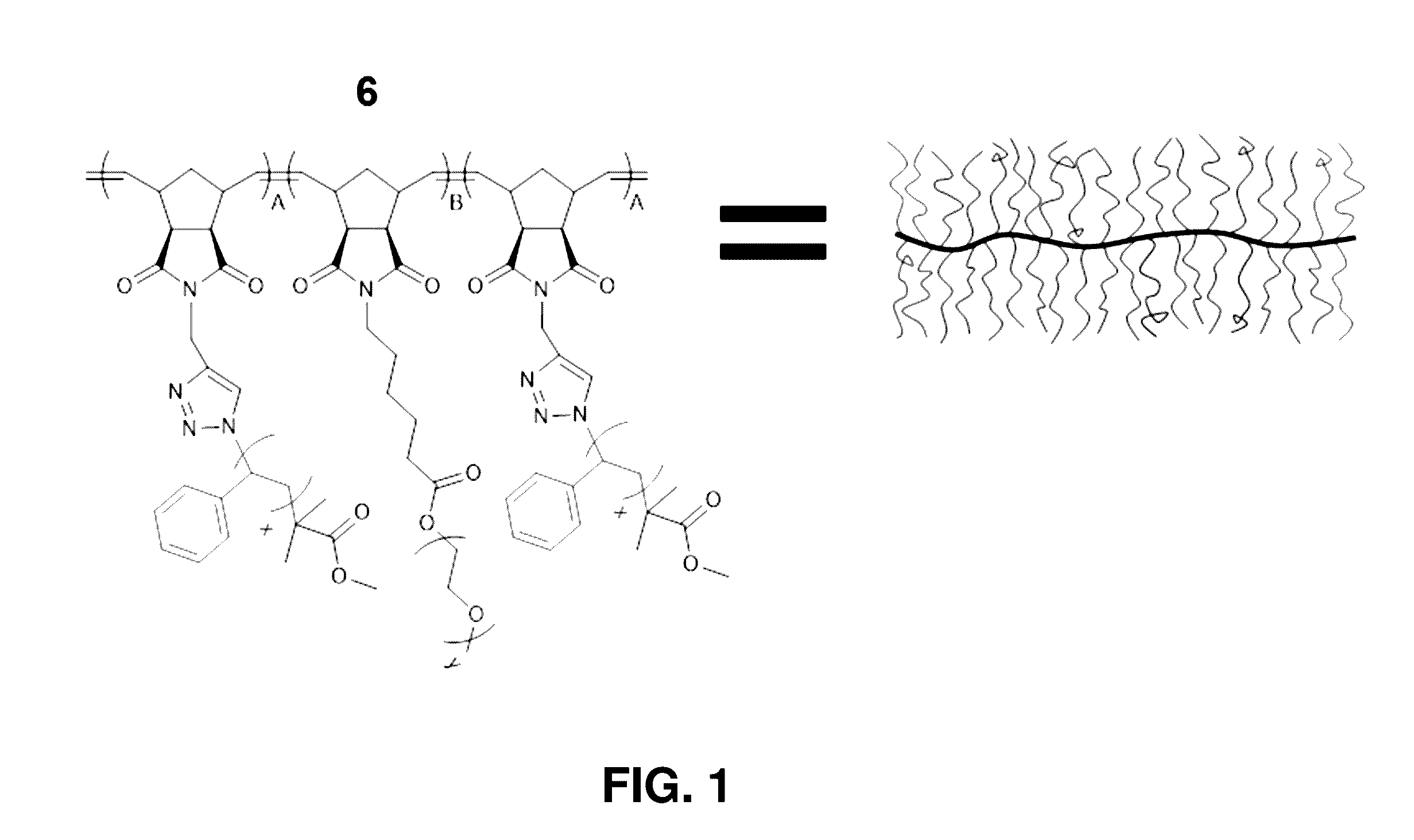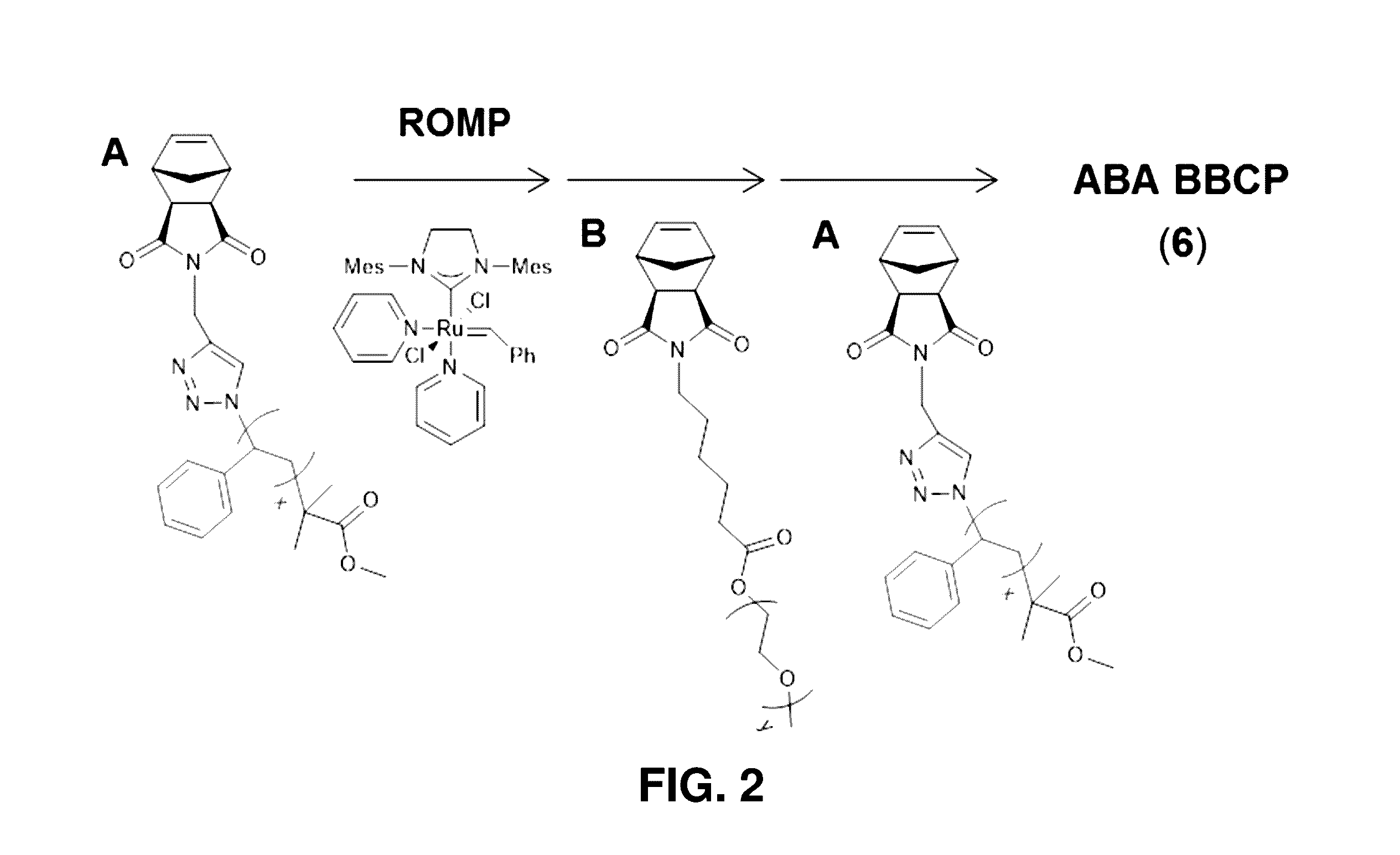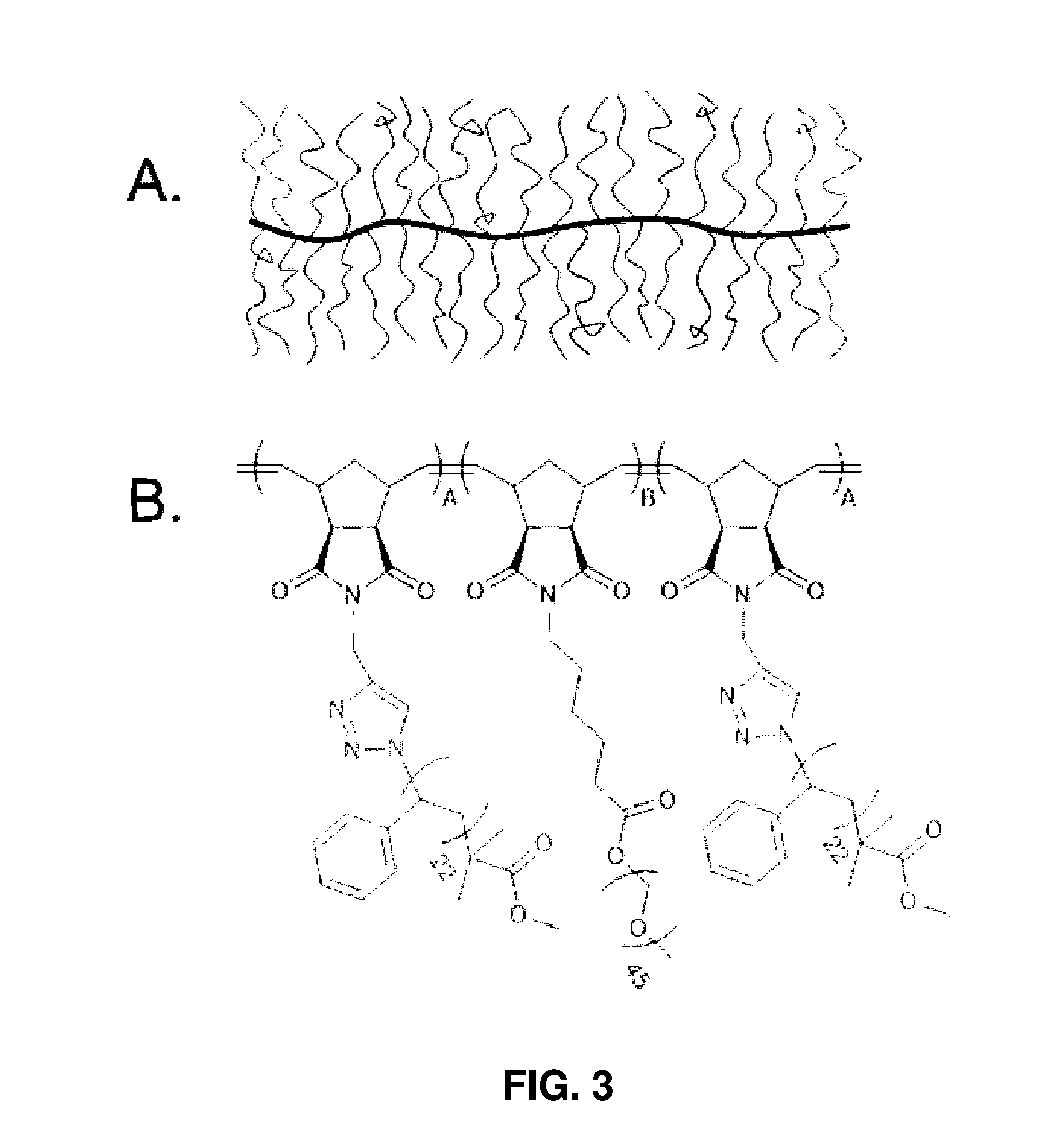Triblock brush block copolymers
a brush block and triblock technology, applied in the field of triblock brush block copolymers, can solve the problems of inability to effectively eliminate defects, degradation of polymer chains, limitations in the efficiency of initiation and conversion of monomers, etc., and achieve advantageous, mechanical and/or elastic strength, and extended polymer backbones
- Summary
- Abstract
- Description
- Claims
- Application Information
AI Technical Summary
Benefits of technology
Problems solved by technology
Method used
Image
Examples
example 1
Brush Block Copolymers
Overview
[0115]The present Example provides description and experimental results supporting the following aspects of the present invention:[0116]Synthesis of fully grafted ABA brush triblock copolymers.[0117]Brush architectures conferring important advantages and opening opportunities for the design of polymer electrolyte membranes with high conductivity.
Background
[0118]The provided BBCPs have polynorbornene backbones fully grafted with PS and PEO side chains (FIG. 1). Different architectures have been synthesized, including AB brush diblock copolymers and ABA brush triblock copolymers (gPS-gPEO-gPS, 6). A denotes PS side chains and B denotes PEO side chains.
[0119]Unlike graft polymers previously reported in the polymer literature, the BBCPs
[0120]a. are grafted in all blocks, not only the PEO block;
[0121]b. guarantee 100% side chain grafting density;
[0122]c. feature narrow dispersity in the side chains (D<1.2); and
[0123]d. do not require post-polymerization modi...
example 2
ABA Triblock Brush Polymers: Synthesis, Self-Assembly, Conductivity, and Rheological Properties
Abstract
[0125]The synthesis, self-assembly, conductivity, and rheological properties of ABA triblock brush polymers (BBCPs) with grafted polystyrene (A block, NPS=21) and poly(ethylene oxide) (B block, NPEO=45) side-chains is described.
Results and Discussion
[0126]All BBCPs reported herein feature 1) 100% grafting density for all blocks, 2) controlled polynorbornene backbone and PS / PEO side-chain molecular weights, and 3) low molecular weight dispersities (0) for all components. Full BBCP synthetic details are provided in the Supporting Information. Briefly, polystyrene macromonomer (Mn≈2500 g / mol, NPS=21) was synthesized using atom transfer radical polymerization with subsequent end-group functionalization to install a single norbornene moiety (Schemes S1-S5).17 Commercially-available mono-methoxy PEO (Mn≈2000 g / mol, NPEO=45) was end-functionalized with norbornene via EDC coupling (Schemes...
example 3
ABC Brush Triblock Terpolvmers
[0190]Compared to AB diblock copolymers, ABC triblock terpolymers vastly expand the parameter space for block copolymer self-assembly.
[0191]Whereas eight equilibrium morphologies are known for linear AB diblock copolymers, over thirty morphologies have been identified for linear ABC triblock terpolymers (FIG. 16).1-2 Although the self-assembly of linear ABC triblock terpolymers has been studied by both experiment and theory, the self-assembly of brush ABC triblocks is relatively unexplored. Our work has closed this gap. It represents the first systematic study of ABC brush triblock terpolymer synthesis and self-assembly.
[0192]We synthesized a series of ABC triblock terpolymers having grafted polylactide (PLA), polystyrene (PS), and poly(ethylene oxide) (PEO) side chains of similar molecular weights (Mn=2.62, 2.65, 2.27 kg / mol, respectively) (FIG. 17). These ABC triblocks were synthesized by the grafting-through ring-opening metathesis polymerization (RO...
PUM
| Property | Measurement | Unit |
|---|---|---|
| molecular weight | aaaaa | aaaaa |
| polydispersity index | aaaaa | aaaaa |
| molecular weight | aaaaa | aaaaa |
Abstract
Description
Claims
Application Information
 Login to View More
Login to View More - R&D
- Intellectual Property
- Life Sciences
- Materials
- Tech Scout
- Unparalleled Data Quality
- Higher Quality Content
- 60% Fewer Hallucinations
Browse by: Latest US Patents, China's latest patents, Technical Efficacy Thesaurus, Application Domain, Technology Topic, Popular Technical Reports.
© 2025 PatSnap. All rights reserved.Legal|Privacy policy|Modern Slavery Act Transparency Statement|Sitemap|About US| Contact US: help@patsnap.com



